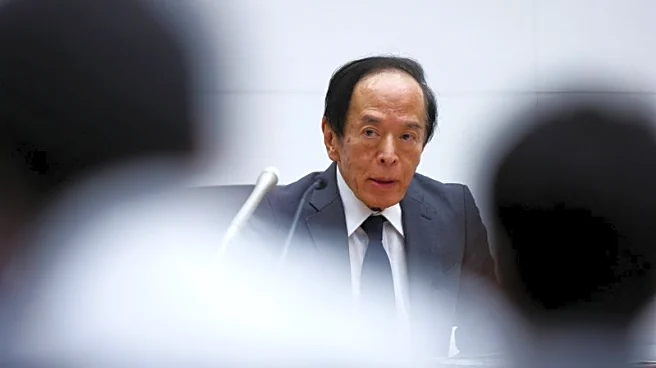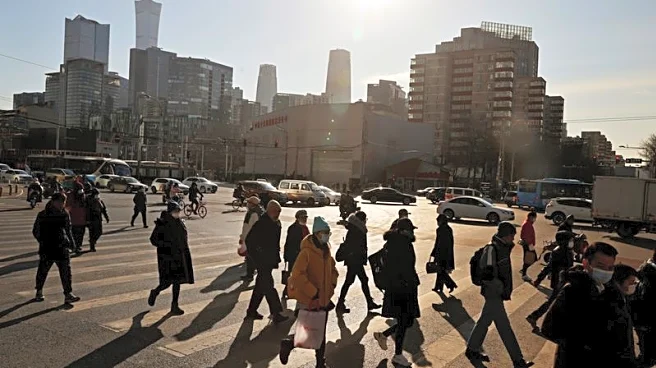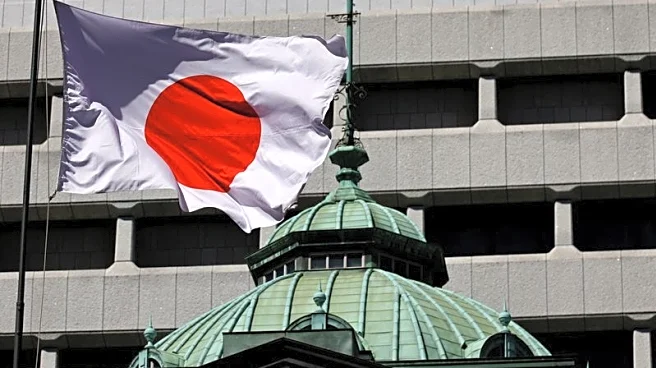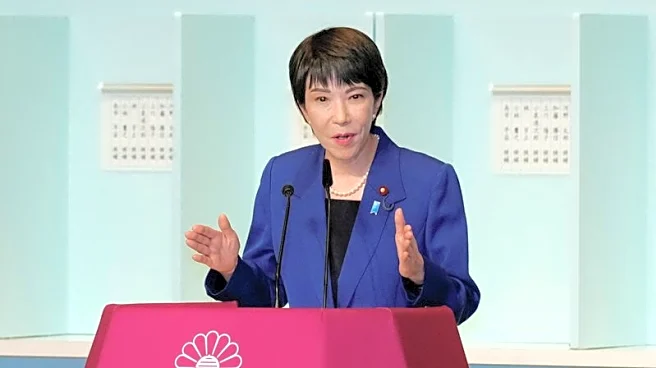What's Happening?
The Bank of Japan has decided to keep its policy rate steady at 0.5%, following a forecast by a Reuters poll of economists. This decision comes as Japan's core inflation rate has fallen to its lowest level since November 2024, registering at 2.7% for August. This marks the third consecutive month of decline in the core inflation rate, which excludes fresh food prices. The headline inflation rate also dropped to 2.7% from 3.1% in July. Additionally, the 'core-core' inflation rate, which excludes both fresh food and energy prices, decreased slightly to 3.3% from 3.4% in July. Despite these declines, rice inflation, a significant contributor to the cost-of-living crisis in Japan, remains high at 69.7%, although it has softened from July's 90.7%.
Why It's Important?
The Bank of Japan's decision to maintain interest rates is significant as it reflects the central bank's cautious approach to economic recovery amid declining inflation rates. The reduction in core inflation suggests a potential easing of the cost-of-living crisis, which has been exacerbated by high rice prices. This decision could impact Japan's economic policy and its approach to managing inflation and economic growth. The steady interest rate may also influence Japan's fiscal health and its ability to navigate external economic risks, such as U.S. tariffs. Stakeholders, including businesses and consumers, may experience relief from inflationary pressures, although the high cost of essential goods like rice remains a concern.
What's Next?
The Bank of Japan is likely to continue monitoring inflation trends and external economic factors closely. Future decisions on interest rates will depend on the trajectory of inflation and economic recovery. The central bank may face pressure to adjust its policy if inflation rates continue to decline or if external economic conditions change significantly. Businesses and consumers will be watching for any signs of policy shifts that could affect economic stability and growth.












